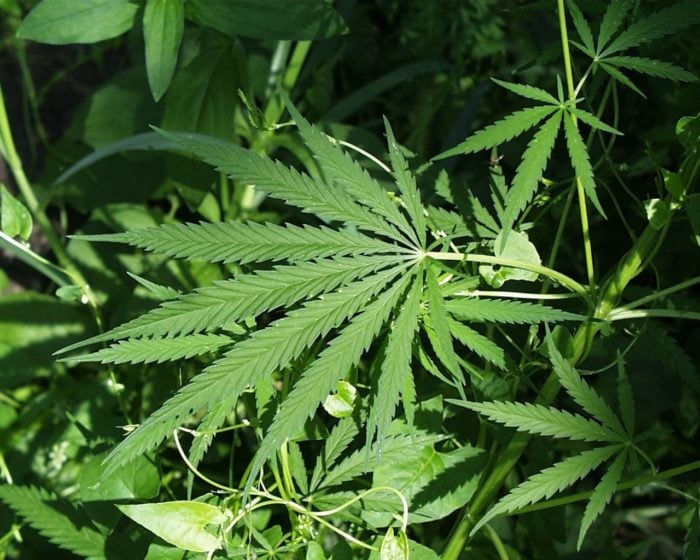
The cultivation of cannabis in Greece for pharmaceutical purposes is now legal, as it was legal until 1936, the year it was prohibited.
Even though the cannabis plant is used for the manufacturing of canvas, fabrics, and rope among other things, the plant has long been associated with its use as a recreational drug.
The word cannabis (or hemp) is used to describe a mixture of dried leaves, stems, flowers, and seeds of the Indian cannabis plant.
Hashish, made from the resins of the Indian cannabis plant, is a related form of the drug. The term cannabis refers to all drugs derived from the Indian cannabis plant, including cannabis and hashish.
Cannabis was cultivated in Ancient Greece
The first references of cannabis cultivation in Greece are from the 5th century BC, as mentioned by the historian Herodotus.
Ancient Greeks cultivated hemp and used it as a raw material for the manufacture of canvas, rope, and fabrics of all kinds, as well as for healing purposes to induce a feeling of euphoria.
During the Middle Ages and the years of rule by the Ottoman Empire, the cultivation of cannabis in Greece continued, but its cultivation became limited due to the successive wars and its long-term occupation by Franks, Venetians, and Turks.
Cultivation remained sporadic even throughout the first years of the establishment of the Greek State, when the need for cannabis was mainly met by imports.
Cannabis cultivation in the modern Greek State
Reports show that between 1860 and 1870 there was significant cultivation of Indian hemp in Mantineia and Argolis in the Peloponnese in Greece.
Around 1875, the first serious attempts at organized hemp fiber cultivation took place and efforts were significantly increased in the following years.
According to a report by the mayor of Orchomenos, Mantineia, published in March 1887 in the monthly magazine Hellenic Agriculture, the cultivation and processing of hemp products were taught by Egyptians, Cypriots, and other migrants from Eastern countries.
According to data from the report “Statistics of special export trade of Greece in 1899” (published by the Statistical Directorate of the Ministry of National Economy), 9,576 okka (approximately 123 tons) of hashish worth 14,369 drachmas, were exported that year.
Exports were not limited to hashish, however. The processing of hemp produced strong fibers, ideal for making ropes, sails, and fabrics among other things.
In 1906, the government of Georgios Theotokis introduced a bill in the Greek Parliament for the taxation of Indian hemp crops and the ban on their export to Egypt.
From the debates in Parliament, it appears that a vote on the bill was a prerequisite for the Egyptian government to sign a trade agreement with Greece.
The agreement was quite important for both countries, as there were a substantial number of Diaspora Greeks in Egypt.
However, it turned out that the British were behind the Egyptian demands; it was they who controlled the trafficking of hashish in Asia through India.
Cannabis cultivation in Greece was indeed taxed, eventually. However, cannabis production continued, and new regions started to cultivate the cannabis plant.
Since 1914, Macedonia, Epirus, the Aegean Islands and Crete were included in the national statistics for such cultivation, with 490 acres devoted to cannabis/hemp growing in Macedonia and 28 acres in Epirus.
From 1915 to 1919, World War I, the naval blockade and the rapid rise in the price of cereals resulted in the cessation of organized hemp cultivation.
In 1920, the government of Eleftherios Venizelos promoted law 2107, titled “on the prohibition of the cultivation, trade and consumption of Indian cannabis (hashish)”, which stipulated that the prohibition would begin on January 1, 1921.
However, in 1924, Law 3070 was drafted, which amended the previous law and postponed the beginning of the ban from January 1, 1921 to January 1, 1926. Two months before the ban began, a new change took place.
By a legislative decree of November 1925, a new ban date was set for January 1, 1936.
In 1932, law 5539 entitled “On the monopoly of narcotic drugs and their control” took hemp cultivation from the hands of producers and placed it in the hands of the state.
This law defined the production, import, and sale of drugs as being “the exclusive right of the State” while the prohibition of cultivation and possession of Indian cannabis was explicitly set.
American pressure stops cannabis cultivation
After World War II, cultivation of cannabis fiber in Greece continued until 1957, when its cultivation was banned by law. At the time, there were seven hemp factories operating, processing fibers for the production of rope.
Until 1957, home processing of cannabis was also very widespread in order to meet the needs of households for clothing, sacks, rope, nets, and so on.
The main reason for banning hemp cultivation in Greece was not only the U.S. pressure in the context of the “anti-drug campaign,” but also the widespread use of cotton and, later, synthetic and fibers.
Cannabis production becomes legal again
The cultivation and processing of cannabis for medicinal purposes became legal once again in March of 2018, when a Parliamentary majority voted in favor of the new bill.
Eighty-two years after the prohibition of hemp cultivation in Greece, the plant may be cultivated once again on Greek soil, offering new opportunities for growth in Greek agriculture.
See all the latest news from Greece and the world at Greekreporter.com. Contact our newsroom to report an update or send your story, photos and videos. Follow GR on Google News and subscribe here to our daily email!



